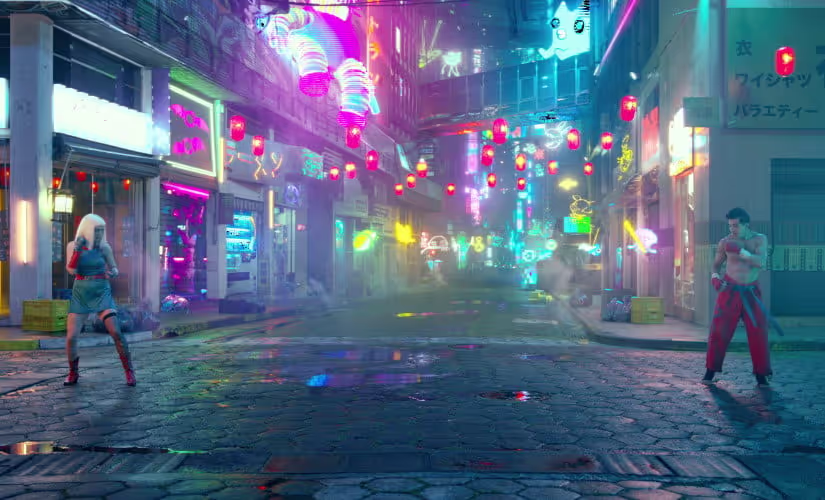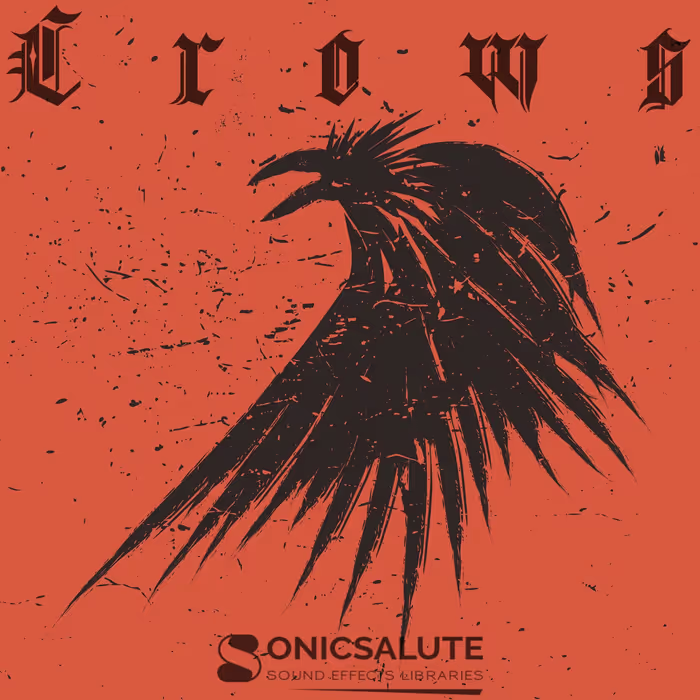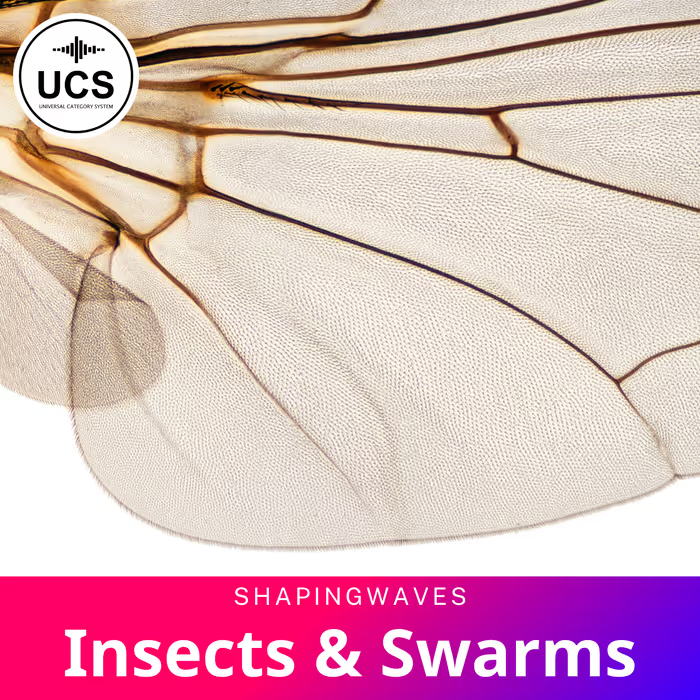Supervising sound editor Steve Browell talks about designing sound for the episode's VR game, UI sounds for the near-future tech, and using sound to support the uncomfortable subject matter the series is known for.
https://www.youtube.com/watch?v=ssr40U3-do0
I love the MPSE awards because it’s a celebration of all things sound editing — a chance for sound editors to recognize and honor the hard work of other sound editors. What could be better?
London-based supervising sound editor/sound designer Steve Browell and his Foley team of Barnaby Smyth (Foley artist) and Mathias Schuster (Foley editor) earned an MPSE nom for sound editing on Black Mirror Season 5, Episode 1 Striking Vipers in which two friends — Danny (Anthony Mackie) and Karl (Yahya Abdul-Mateen II) — discover the VR version of their favorite fight game Striking Vipers can be used to explore more physical aspects the developers didn’t intend, but their intimate encounters online start to have real-world implications.
In this interview, Browell talks about creating sound for Black Mirror’s tomorrow-tech, which is just slightly ahead of our own. Browell’s sophisticated UI sounds for the cellphones, dishwasher, gaming console, and even high-tech pinball machine are exactly how you’d imagine them to be — fresh yet familiar, sleek, and warmly digital (not harsh or invasive).
He also talks about using sound to help support the uncomfortable feelings that Black Mirror stirs up. The troubling stories and subject matter are bolstered by the subtle use of sound, which helps to evoke and enhance emotion.
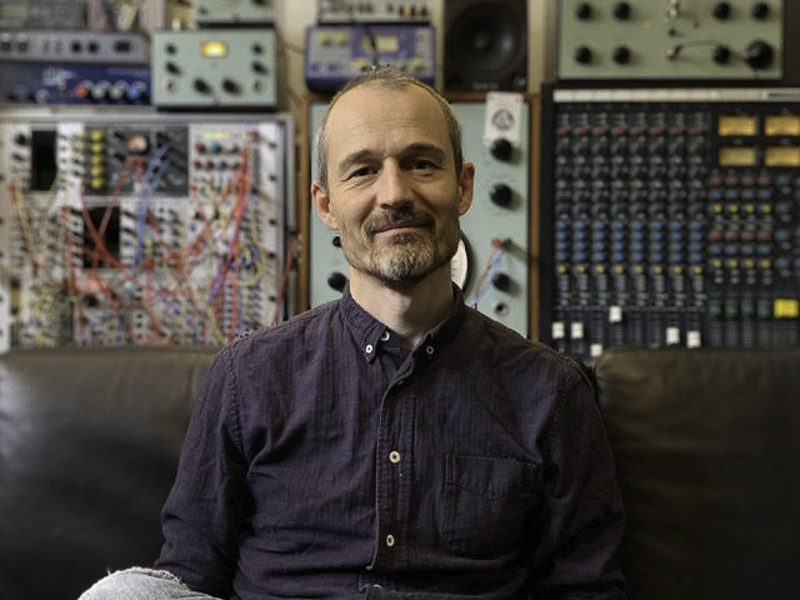
Black Mirror is such a disturbing series. The stories have a way of making you feel very uncomfortable, but also there’s so much that’s conveyed through the tone of the sound. How were you able to enhance that uncomfortable feeling through sound on “Striking Vipers?”
Steve Browell (SB): As with all my projects, I try to understand what the narrative is trying to do and then use sound to help convey that. What the show does well is play with your emotions, setting you up with the comfort of familiarity but then turning that upside down and leaving you with a feeling of loss, I guess. So in the episodes that I’ve done, I just try to build on that.
Sound is such a great tool for evoking emotion.
As humans, we are so preprogrammed with sound and it is fun pushing those buttons in the soundtrack, especially in the nuances of the ambiences. Sound is such a great tool for evoking emotion.
 Was this your first experience working with director Owen Harris? Can you tell me about your collaboration on this episode? What were his goals in terms of sound?
Was this your first experience working with director Owen Harris? Can you tell me about your collaboration on this episode? What were his goals in terms of sound?
SB: Striking Vipers was the first time we worked together. When I started the project Owen was living in Spain so we did not have the traditional spotting session together; our interaction was through email and phone calls. He sent through a great list of wishes that I tried to work into the track as best I could.
In addition to writing the shows, Charlie [Brooker] is very much the show-runner so it’s an interesting challenge making the director’s wishes work with Charlie’s overall vision. Luckily, I had worked on the episode “Crocodile” in Season 4, so I had an idea of how to navigate this. With all the Black Mirror episodes, the goal is to make it sound like tomorrow — not too futuristic, but as if it’s the technology of tomorrow.
Charlie and I are similar in age and maybe share an appreciation for an 80’s-retro style, which is fun to bring through. For example, in Striking Vipers it has this holographic pinball machine. It was fun trying to put a futuristic take on a machine with lots of nostalgia.
Pro Tools and all its plug-ins are great but it’s important to start with the idea of the sound you want in your head and then use the tools to get there. Don’t let the tools lead you.
The UI sounds in Striking Vipers, like the cellphone text sounds, the dishwasher sounds, and the game console sounds were all fantastic. They sounded high-tech and digital yet slick feeling….
SB: Thanks! It was a fun job creating all these UI type sounds. I really wanted them all to have a style specific to Striking Vipers and spent a lot of time matching their quality to the Machine/tech/speaker they played out of. I’ve got a bunch of old analog gear, like oscillators, delays, compressors, interesting distortion modules, and some modular stuff. So that’s a great source for original sounds. I then carve those into what I want to make in Pro Tools. Pro Tools and all its plug-ins are great but it’s important to start with the idea of the sound you want in your head and then use the tools to get there. Don’t let the tools lead you.
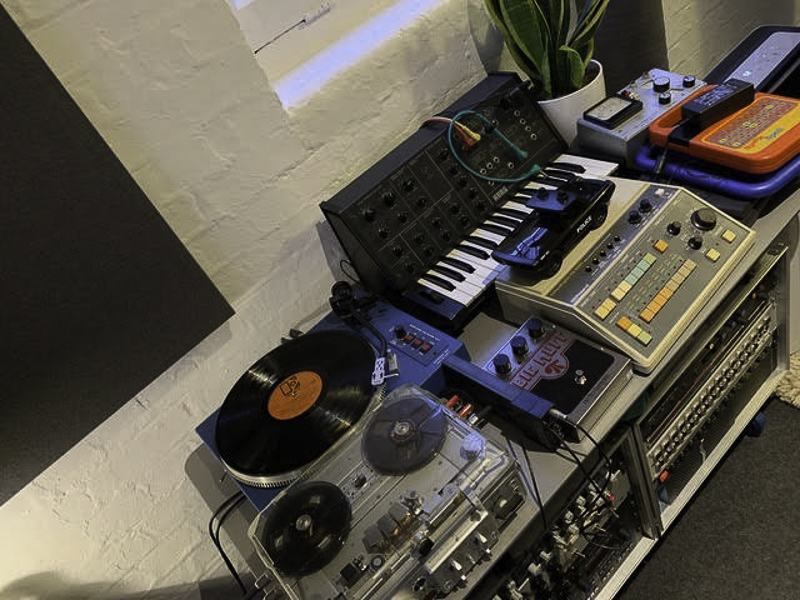
Steve, if you’re ever looking for a new direction in your sound career, you should get into UI sound design. What you created for the tech in Striking Vipers had a pleasing, round-yet-digital slick feel. It was fantastic!
SB: My partner and I are friends with a project manager on the “Google Home” assistant in San Francisco. He is a fan of the show so I did drop a couple of hints the last time I saw him, saying that if they need someone to do some UI sound work I would be more than happy to help out.
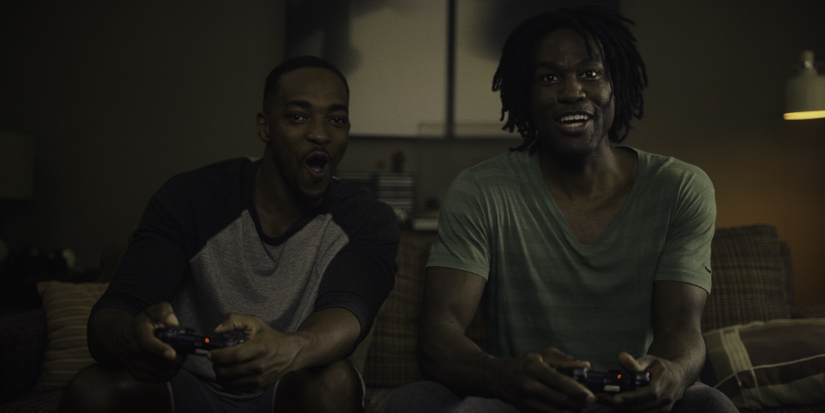
Another fun, old-school feature of this episode was the Striking Vipers fight game. Initially, it’s this 2-D console game reminiscent of Mortal Kombat. How did you handle the sounds for that 2-D version of the game?
SB: The reference was actually more on Street Fighter, and so I played a lot of Street Fighter beforehand to get a feel for it. I hadn’t played it before and so I spent some time getting a feel for how they dealt with sound and music in the game.
So I actually started working on the immersive VR version, Striking Vipers X, when Danny and Karl first drop in to the game. I had the sound of old Kung Foo fight scenes as a reference from Charlie. I also made it feel like the viewer was in the game and experiencing the impacts for themselves. So I got to work creating a very immersive but exaggerated fight sequence.
I’m a big proponent of creating all my content from scratch rather than just using libraries, so most of the sounds in there are completely original.
Funny, my next question was, “How did you expand the sounds of the 2-D game into the VR version?” But your approach makes much more sense!!
SB: Thanks. Yes, the sounds are essentially the same; they’ve just been manipulated to make them fit the aesthetic of the vintage game.
I probably make things harder for myself, but I’m a big proponent of creating all my content from scratch rather than just using libraries, so most of the sounds in there are completely original.
What were some of your favorite fight sounds you designed for that game? How did you make them?
SB: The fight was a really interesting challenge. I loved the idea that some of the fighters were moving somehow faster than the graphics and leaving these motion trails behind them. Visually, these textures gave the sequence great fluidity and it was interesting to try and get the sound to hang in the air like the visual particles, and I was also trying to get the quality of the sound to feel textured like they were. In the end, it was decided that the music needed to drive the scene but there is a lot of very detailed sound work in there.
Visually, these textures gave the sequence great fluidity and it was interesting to try and get the sound to hang in the air like the visual particles…
Luckily, I did get to use some of these motion trails of sounds in the old-school game.
In terms of sound sources, some of it was synth-based and other sounds were natural fight sounds like impacts and cloth movement and whooshes. The low-end impacts on the hard hits (like when Lance gets slammed on the ground and the bricks break beneath him) were produced using plug-ins like the Avid Pro Subharmonic . I had created a lot of the sounds on some of the old analog gear I have, which I then shaped with plug-ins like Cargo Cult’s Envy , Audio Ease’s Speakerphone, Softube’s Transient Shaper and some of the Soundtoys plug-ins.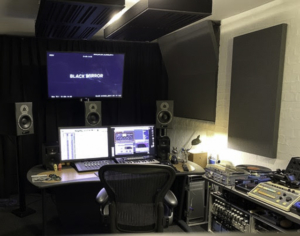
I mean, I’m just trying to follow the visual cues and enhance them with sound. When Lance hits the ground, there’s also debris and dust that floats up, so it was just a case of trying to get all those textures in there.
I love the design work of Danny entering the virtual world of the Striking Vipers X VR game. What was the aesthetic approach and how did you create that sequence?
SB: My partner, she probably gets fed up with me spending so much time creating sounds in the most elaborate ways, but I just love playing around and experimenting. Be that with physical items and recording them with mics or pickups or patching up old test gear and modular synths. I record a lot of this and am very diligent about cataloging it and adding it to my library. I might not have a use for those particular sounds at that time but I hold onto them. What’s nice about creating your own material is that it goes into your memory and always sits there. So when certain needs arise — like that sequence of Danny entering into the VR world — I already have a massive library of original material I can pull from.
I use Soundminer as an asset management tool, but it’s also a great creative tool, like for recording live pitch-shift performances.
I use Soundminer as an asset management tool, but it’s also a great creative tool, like for recording live pitch-shift performances. So for some of that sequence, I started with the synth-based sounds and manipulated the playback speed via the pitch-shifter in Soundminer. Also now in V5, the sampler is a great addition.
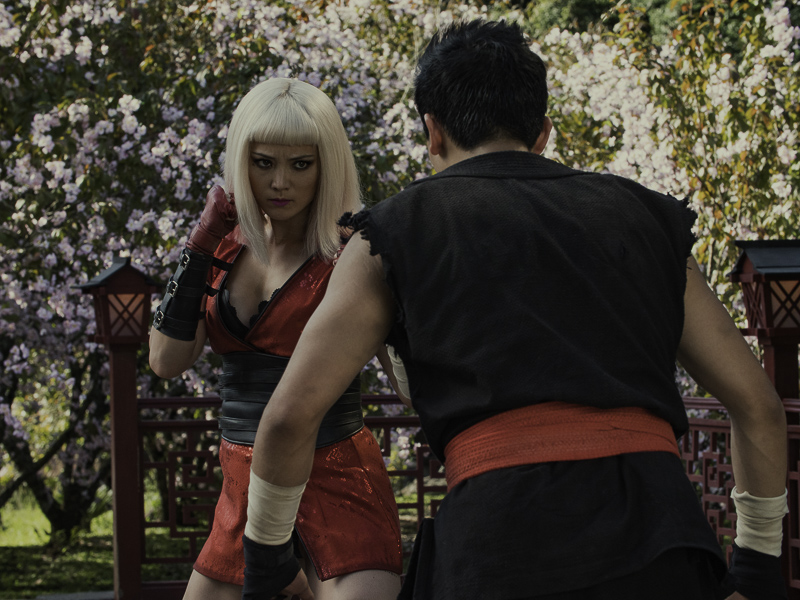
When Karl and Danny first enter the Striking Vipers X virtual space, you hear Karl’s voice and Roxette’s voice stacked together initially, to bridge that gap between the female character we see visually and the male player who’s controlling her. Can you tell me about your editing approach there?
SB: I have to give credit to the dialogue supervisor Michael Maroussas. Owen had originally asked for something like that, to hear two voices throughout the game. But we backed off from this original idea so you only hear it at the beginning and end of the fights as it did get a little distracting.
But the credit goes to Michael for coming up with that sound. It makes me think of the print-through that used to happen with analog tape. It has that type of texture, as though it’s from tape. It’s a cool thing he did.
It makes me think of the print-through that used to happen with analog tape. It has that type of texture…
Also, credit goes to Doug Cooper, the re-recording mixer. He added his processing — reverbs and that sort of thing — to fit it into the space and make it feel nice and cohesive.
[tweet_box]Designing the Disturbing Sound Black Mirror’s ‘Striking Vipers'[/tweet_box]
What was your most challenging scene for sound? What went into it?
SB: I think it was the fight between Danny and Karl outside in the rain. It was quite hard getting their footsteps to sound nice and natural. The production sound there was obviously tricky because of the rain machines.
It’s funny, the UI sounds come quite naturally, and I love creating natural spaces and ambiences, but it was a struggle getting that exterior rain scene to sound nice and natural with their footsteps in the puddles.
What was your most challenging single sound to create?
SB: That’s a difficult one. I’d have to say it was the sequence of Danny first dropping into the game. There were a few versions of that. By the time we got final picture, we were getting close to final mixing. The challenge was to come up with a great idea in a short space of time.
The little infographic that is prompted at the end of the game was also an interesting one. Getting the sound to feel like it was rotating in the little box was great fun. I think where they exit the game there is one of my favorite sound moments in the show.
In terms of sound, how was Striking Vipers a unique experience for you?
SB: With every project you have to approach things differently. What’s unique about the show is working for Charlie and Annabel Jones (executive producer). They’re really amazing to work for. It’s not often that you get challenged like that on projects. When you see what they’re trying to do and you get to talk to them about it, it’s a real inspiration to be around as it really drives my creativity. To have so many intricate sound elements that are fundamental to the narrative of the show really showcases how important sound design can be in the overall experience. I like to think that what we do with sound is a type of sculpture. The episodes of Black Mirror I have worked on have really challenged the breadth of my skills. I have to pinch myself at work every day that someone is actually paying me to mess around with sound.
A big thanks to Steve Browell for giving us a behind-the-scenes look at the sound of Black Mirror and to Jennifer Walden for the interview!

